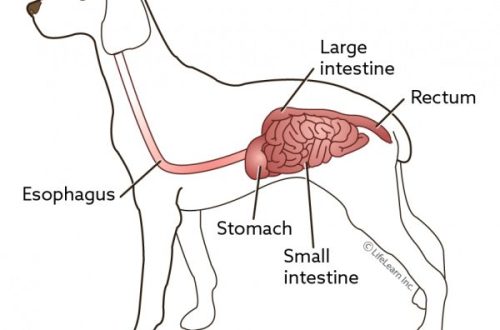
Symptoms of various diseases in dogs

Often the disease manifests itself with several symptoms at the same time. For example, canine distemper is usually accompanied by fever, vomiting, diarrhea, and discharge from the nose and eyes. At a later stage of the disease, convulsions and tics may appear, which is usually associated with damage to the nervous system by the plague virus.
General and specific symptoms
Symptoms are general and specific. Common symptoms include symptoms that occur in almost all diseases. For example, vomiting and diarrhea can be observed in viral infections, in case of poisoning, in violation of the diet (food stress), as side effects of drugs, in case of helminth infection, etc.
Specific symptoms are less common and are usually associated with a specific disease or group of diseases. A good example is the discoloration of the urine to almost black in a dog with piroplasmosis, which is associated with the active destruction of red blood cells as a result of babesia infection.
Increased thirst and an increase in urine volume is a more specific symptom characteristic of diabetes mellitus, chronic renal failure and inflammation of the uterus, while the symptom is the same, but the mechanisms for this phenomenon are completely different.
Sometimes diseases proceed atypically, then even the symptoms characteristic of it may be absent.
Acute and chronic symptoms
Symptoms can be acute or chronic. For example, diarrhea can start abruptly and suddenly – with a viral infection, or it can happen once a week for 3-4 months – with diseases of the large intestine. A dog may suddenly begin to limp when sprained or injured, or limp only in the morning, immediately after waking up, which is typical for arthritis. Also, lameness can be pronounced, or it can be almost imperceptible or occur only after exercise.
Subtle Symptoms
The symptoms may be almost invisible. For example, moderate discharge from the loop (female vulva) with pyometra (inflammation of the uterus) may not be obvious to the owner, as the dog will be regularly licked, and this symptom can also be confused with manifestations of normal estrus.
In fluffy dogs, such as collies or huskies, the change in body weight is usually not as obvious as in smooth-haired breeds, such as Dobermans or Boxers.
A dog’s reluctance to run for a walk can be attributed to age or heat, while this may be the first symptom of heart disease.
Some symptoms cannot be detected by simple examination and observation. For example, heart murmurs can only be heard with a stethoscope, and abnormalities in urine and blood tests can only be detected using laboratory equipment, although they will also be symptoms of diseases.
Therefore, it is very important to regularly monitor the condition of the dog and pay attention to the slightest changes, even those that seem insignificant. And, of course, you should regularly visit the veterinary clinic for preventive examinations, and it is advisable to do this annually.
The article is not a call to action!
For a more detailed study of the problem, we recommend contacting a specialist.
Ask the vet





